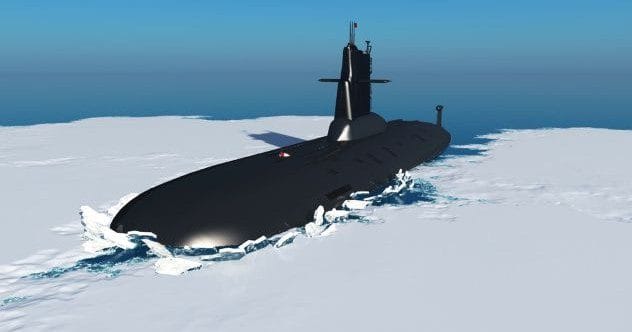The ocean’s depths have always beckoned humanity, with early submarine designs dating back centuries. Though David Bushnell’s 1776 attempt to breach the British blockade of Boston Harbor was unsuccessful, it marked an early milestone. By April 12, 1900, the U.S. Navy commissioned its first submarine, the USS Holland (SS-1). Submarine travel became more common by the mid-20th century, highlighted by the USS Nautilus (SSN-571), the first nuclear-powered submarine, in 1955. The 1960s saw numerous submarine achievements but also faced significant setbacks and tragedies. Here are ten sobering submarine incidents from that decade.
K-8 (1960)
The K-8, a Soviet “November class” submarine, faced issues during an exercise in the Barents Sea on October 13. Leaks in critical piping and steam generators emerged. When standard equipment failed, the crew improvised a solution, directly cooling the reactor with water, preventing a meltdown.
However, this exposed the vessel and crew to high levels of radioactive gases. Three crew members suffered visible radiation injuries, highlighting the dangers of early nuclear submarine technology. Despite their efforts, the incident underscored the risks involved in operating these vessels.
K-11 (1965)
The K-11, another “November-class” submarine, experienced a critical incident in February 1965. During a refueling exercise, the reactor lid was incorrectly replaced and had to be lifted again. This time, the beam meant to prevent over-lifting was incorrectly positioned, leading the reactor to become critical.
Radioactive steam was detected, but the mishap went unnoticed. On February 12, the reactor overheated again, emitting radioactive steam, and a fire ignited in the reactor compartment. Seven crewmen suffered radiation exposure injuries while fighting the fire, marking another serious event in the Soviet nuclear submarine program.
K-27 (1968)
The K-27, the Soviet’s first Project 645 nuclear attack boat, featured advanced VT-1 liquid metal-cooled reactors. It set a Soviet record by remaining submerged for fifty days. However, on May 24, 1968, one of the VT-1 reactors failed, causing a power drop and a surge in gamma radiation in the reactor compartment.
Gas emitted from the reactor spread to other compartments, and although a radiation detector eventually alerted the crew, all 144 members were exposed to radiation for over five hours. Nine men died from radiation poisoning. Decommissioned in 1979, the K-27 was scuttled in the Kara Sea in 1982, posing a continuous environmental hazard.
Sargo II (SSN-583) (1960)
Launched in 1957, the Sargo II conducted a submerged exploration of the Arctic basin in early 1960. By February 9, it reached the North Pole, gathering hydrographic and physiographic data. The submarine covered over 11,000 miles, including 6,003 under the ice. It was quite an achievement for the US Navy.
On June 14, an explosion and fire erupted while docked, caused by charging oxygen tanks. One crew member died. The Sargo II spent the rest of the summer in the shipyard, highlighting the dangers of routine operations.
K-19 (1961)
In November 1960, the Soviet Union launched its first ballistic missile-equipped nuclear submarine, the K-19. Rushed into service, it experienced numerous malfunctions during sea trials. On its first mission in June 1961, the K-19 developed a radioactive leak in the North Atlantic.
A faulty pressure gauge led to damage in the primary system, resulting in a fire and a lack of coolant. Crew members improvised a cooling system using drinking water, preventing a potential meltdown. However, eight crew members died from radiation poisoning, and 22 of the original 139 crew members died in the years following the incident.
INS Dakar (1968)
In 1965, the Israeli Navy acquired the HMS Totem from the British Navy, commissioning it as the INS Dakar in 1967. After modifications, the Dakar set sail for Israel on January 9, 1968. Six days later, it arrived at Gibraltar, departing that midnight, never to be seen again.
The last transmission from the Dakar was received on January 24. A search mission was launched, but on February 4, it was called off, with all 69 sailors presumed dead. The disappearance of the INS Dakar remains one of Israel’s most enduring naval mysteries.
K-129 (1968)
K-129, a Soviet nuclear ballistic submarine, was equipped with three R-21 ballistic nuclear missiles. In March 1968, the captain was ordered to maintain silent mode for two weeks on combat patrol in the Pacific. When no radio transmission was received, concern grew, and the vessel never returned to port on May 5.
Official reports suggest the submarine flooded and sank, while other theories include a missile explosion or a collision. The Soviets never recovered the wreck, and all 98 crew members were lost, marking another significant Cold War submarine disaster.
USS Scorpion VI (SSN-589) (1968)
The USS Scorpion, a Skipjack-class attack submarine, participated in NATO and U.S. operations. In May 1968, after operating with the Sixth Fleet, it headed home to Norfolk, Virginia. However, it was reported as ‘overdue’ six days later, initiating a major search effort.
On June 5, the USS Scorpion was declared “presumed lost,” with all 99 crew members perishing. The wreckage was found west of the Azores, but the cause of the incident remains undetermined, leaving a lasting shadow over naval history.
B-37 (1962)
The B-37, a Soviet diesel submarine, was moored at Polyarny on January 11, 1962. During routine inspection and weapons handling, a fire broke out, leading to a torpedo explosion minutes later. All ammunition from the eleven torpedoes detonated, completely destroying the vessel. The cause of the fire remains in question.
The accident killed everyone onboard, on the dock, and at the torpedo technical base, totaling 122 deaths. The victims were buried at the Polyarny cemetery, marking a grim chapter in Soviet naval history.
USS Thresher (SSN-593) (1963)
The USS Thresher, launched in 1961, was the lead nuclear attack submarine in its class, equipped with advanced sonar. On April 10, 1963, during deep-diving tests with the USS Skylark, the Skylark received muddled messages from the Thresher, including mentions of a “minor problem.”
Messages ceased, and the Thresher was presumed lost. All 129 men died. The accident’s cause was likely faulty piping, leading to a loss of power and the inability to blow ballast tanks. The USS Thresher remains a poignant reminder of the dangers of deep-sea exploration.
The 1960s were a period of significant advancement and tragic loss in submarine history. These incidents remind us of the inherent risks of exploring the ocean’s depths and the sacrifices made by those who venture beneath the waves.
What are your thoughts on these historic submarine incidents? Share your insights and comments below!










